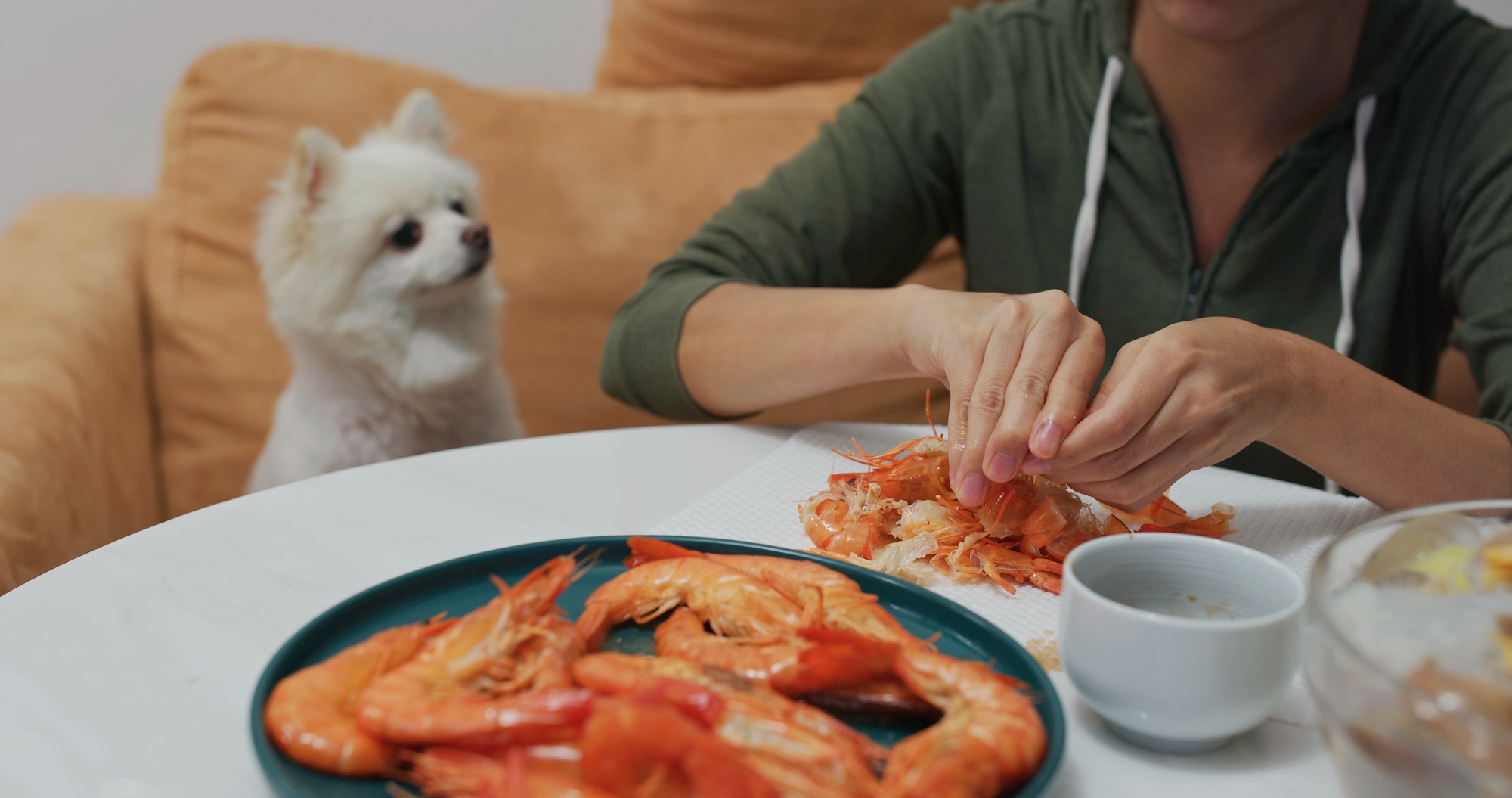Yes, dogs can eat shrimp in moderation. In fact, shrimp can be a nutritious snack for your dog, since it delivers protein and several key nutrients.
However, it’s important to feed dogs only cooked, plain shrimp with no added fats, salt, or seasonings. Here’s what to know before you share your shrimp cocktail with your pup.
What are the nutritional pros and cons of shrimp?
So what are dogs eating when they eat shrimp? As mentioned above, these crustaceans are low in calories and fat and contain important nutrients like omega-3 fatty acids, potassium, and vitamin B-12. They’re also a good source of protein. One medium-sized shrimp is 7 calories and provides about a gram of protein.
One thing to keep in mind is that while sodium is an essential nutrient for cellular function, dogs with certain health conditions, like heart disease, may be sensitive to it. Shrimp naturally has a small amount of sodium, but the packaged, frozen kind often has added sodium for flavor and preservation. Your vet can help you navigate questions about salt intake for your dog, and how much shrimp—fresh or frozen—is appropriate for them.
Shrimp is also relatively high in cholesterol, and for many years, was considered best avoided for the sake of heart health. However, shrimp has extremely low amounts of saturated fat and relatively high levels of healthy omega-3 fatty acids. In human studies, shrimp has been found to have a positive effect on HDL (so-called “good” cholesterol) and blood lipids. So, assuming the shrimp are prepared with no added fats, and given occasionally, in moderation, they should be OK for healthy dogs. If you have any doubts about whether shrimp is appropriate for your dog, consult your vet.
How much shrimp can a dog have?
Shrimp should be an occasional treat. The majority of a dog’s calorie intake should be reserved for their fresh meals in order to maintain a healthy weight and nutritionally balanced diet, while treats should make up no more than 10% of a dog’s total daily calories. How much you offer your dog will depend on your dog’s daily caloric needs. Shrimp is low in calories, so dogs of any size could technically have several plain, cooked medium shrimp. But because your dog will likely get more treats elsewhere throughout the day, err on the side of fewer—one or two shrimp for small dogs, for example. Keep in mind, too, that caloric needs can change depending on a dog’s age, activity level, and whether or not they’re spayed or neutered, among other factors, so if you’re unsure about how much to feed given your own dog’s health and caloric needs, ask your veterinarian for a recommendation.
Is there any chance my dog would be allergic to shrimp?
Shellfish allergies are common enough among humans to give people pause when feeding their dogs shrimp. And, though it’s rare for dogs to have this type of allergy, it’s not impossible. As with any new treat, start by giving them a very small amount and see how they tolerate it. Keep an eye on them for signs of a reaction. Vomiting or loose stools may be a sign of food intolerance, and more serious reactions are similar to those in humans. They include hives, facial swelling, wheezing, or itchiness. Each is a good reason to go to the vet immediately.
How should the shrimp my dog eats be prepared?
There are famously many ways to prepare shrimp. The shrimp your dog eats can be boiled, steamed, baked, or grilled, but it should always be just that: shrimp. No fats, like oil or butter, extras like garlic or onion, or seasoning, like paprika or pepper, should be added to the mix. The shrimp definitely should not be served with cocktail sauce. The ingredients that humans like to cook shrimp in—or eat alongside shrimp—may be toxic to dogs or can cause digestive issues.
When preparing the shrimp, be sure to remove the veins, shells, and tails, since those hard exteriors can irritate a dog’s stomach. Raw shrimp is always a no-go for dogs. Uncooked shellfish could be a source of parasitic infection or foodborne illness, per the FDA, so no matter which of the dog-safe ways you choose to prepare the shrimp, make sure it’s cooked all the way through. You’ll know you’ve succeeded at cooking them thoroughly when they’re opaque. Finally, cut the shrimp into smaller pieces to avoid any risk of your dog choking. Bon appétit to pups and their humans alike.










